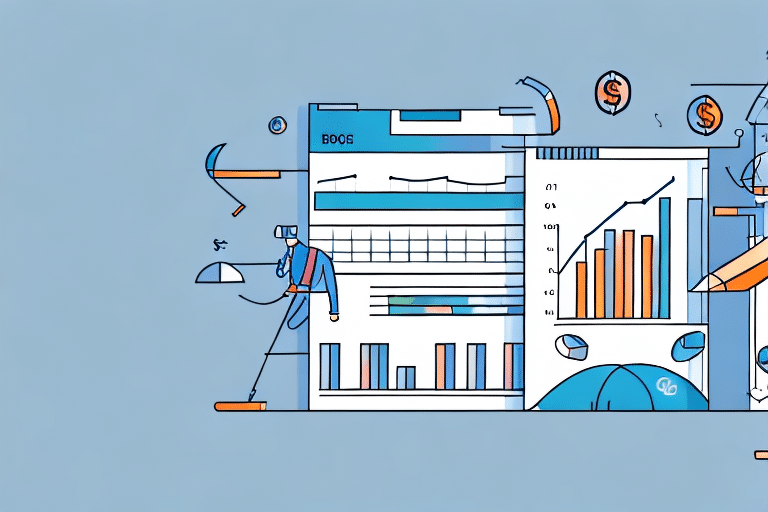10 Cost Savings Ideas for Companies to Maximize Profitability
As companies strive to maximize their profitability, one crucial focus area is cutting down unnecessary expenses. Implementing effective cost-saving strategies can significantly enhance a business's bottom line. In this article, we outline ten actionable cost savings ideas that companies can adopt to boost their profitability.
1. Cutting Down on Office Expenses
Office expenses can be a substantial part of a company's budget. Here are several ways to reduce these costs:
Virtual Offices and Shared Workspaces
Opting for virtual offices or shared workspaces can significantly reduce rental expenses. Platforms like WeWork offer flexible workspace solutions that can be tailored to your needs.
Going Paperless
Implementing a paperless office can save costs on printing, copying, and mailing. Tools like Google Workspace facilitate digital document management.
Energy-Efficient Practices
Adopting energy-efficient practices such as turning off unused equipment and using LED lighting can reduce utility bills. According to the U.S. Department of Energy, LED lights use at least 75% less energy than incandescent lighting.
2. Negotiating Better Deals with Suppliers and Vendors
Effective negotiation can lead to significant savings in procurement costs. Here's how:
Research and Market Analysis
Understanding market trends and supplier competition equips you with the knowledge to negotiate favorable terms. Resources like Bureau of Labor Statistics provide valuable industry data.
Building Strong Relationships
Maintaining good relationships with suppliers can lead to better pricing, longer payment terms, and bulk discounts.
Clear Communication
Clearly articulating your needs and expectations facilitates mutual understanding and beneficial agreements.
3. Using Technology to Streamline Business Operations
Leveraging technology can enhance efficiency and reduce operational costs:
Customer Relationship Management (CRM) Systems
Implementing CRM systems like Salesforce automates sales and marketing processes, saving time and resources.
Cloud Computing
Adopting cloud solutions from providers such as Amazon Web Services can be more cost-effective than maintaining on-premise servers.
Project Management Software
Tools like Asana facilitate team collaboration and increase productivity, reducing the need for frequent in-person meetings.
4. Outsourcing Non-Core Business Functions
Outsourcing allows businesses to focus on their core competencies while reducing costs associated with non-essential tasks:
Accounting and Payroll
Outsourcing accounting and payroll to specialized firms like Gusto can lead to cost savings and improved accuracy.
IT Support
Partnering with IT service providers ensures that technical issues are handled efficiently without the need for a large in-house team.
Benefits of Specialization
External service providers bring specialized expertise and advanced technology, enhancing operational efficiency.
5. Leveraging the Gig Economy: Hiring Freelancers
The gig economy offers flexible and cost-effective workforce solutions:
Access to Diverse Talent
Platforms like Upwork and Freelancer provide access to a wide range of skilled professionals on a project-by-project basis.
Cost Efficiency
Hiring freelancers eliminates the costs associated with full-time employees, such as benefits and office space.
Enhanced Flexibility
Freelancers offer flexibility in scaling your workforce based on project needs, allowing for efficient resource management.
6. Implementing Energy-Efficient Practices
Energy efficiency not only benefits the environment but also reduces operational costs:
Energy-Efficient Equipment
Investing in energy-efficient appliances and machinery can lead to long-term savings. The Energy Saver provides guidelines on energy-efficient options.
Renewable Energy Sources
Adopting renewable energy sources such as solar or wind power can significantly cut energy costs. Companies like Solar Energy offer viable solutions for businesses.
Building Automation Systems (BAS)
Implementing BAS to control and monitor building systems optimizes energy usage. According to the Energy Star, BAS can reduce energy consumption by up to 30%.
7. Employee Training to Reduce Operational Costs
Investing in employee training can lead to increased productivity and reduced errors:
Enhanced Skills and Efficiency
Well-trained employees perform tasks more efficiently, leading to cost savings. Programs from platforms like LinkedIn Learning offer comprehensive training resources.
Improved Customer Satisfaction
Trained employees can handle customer inquiries more effectively, enhancing customer loyalty and repeat business.
Reduced Turnover
Investment in training fosters employee satisfaction and retention, lowering recruitment and onboarding costs.
8. Minimizing Inventory Costs and Avoiding Overstocking
Effective inventory management can lead to significant cost savings:
Inventory Management Software
Using systems like Fishbowl or SAP Inventory Management helps optimize stock levels and turnover rates.
Just-In-Time (JIT) Inventory
Implementing a JIT system involves ordering inventory only as needed, reducing storage costs and minimizing the risk of overstocking.
Demand Forecasting
Accurate demand forecasting ensures that inventory levels align with market needs, preventing excess stock and associated costs.
9. Reducing Travel Expenses
Travel expenses can be a significant cost for businesses. Here’s how to minimize them:
Utilizing Video Conferencing
Adopting tools like Zoom or Microsoft Teams can reduce the need for costly business travel.
Corporate Travel Programs
Leveraging corporate travel programs and booking in advance can lead to substantial savings on flights and accommodations.
Alternative Transportation and Accommodations
Considering more economical transportation options and budget-friendly accommodations like Airbnb can further cut travel costs.
10. Optimizing Cash Flow and Managing Debt Effectively
Effective cash flow and debt management are essential for financial stability and profitability:
Negotiating Payment Terms
Extending payment periods with suppliers or negotiating discounts for early payments can improve cash flow management.
Debt Management Tools
Utilizing tools and strategies to reduce debt and interest payments can enhance financial health. Resources like IRS Business Financing Options provide valuable information.
Regular Financial Review
Consistently reviewing financial statements helps identify opportunities to reduce or consolidate debt, ensuring better financial management.
Conclusion
Implementing these ten cost-saving strategies can help businesses reduce expenses and enhance profitability. By focusing on efficient operations, smart negotiations, leveraging technology, and effective financial management, companies can optimize their resources and achieve sustainable growth.




















